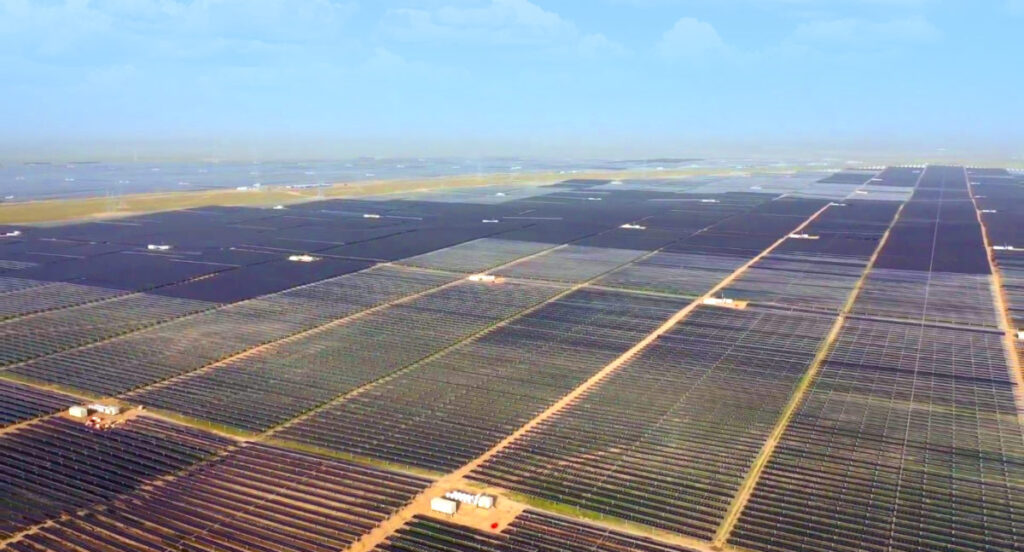Researchers in China came up with a new PV prediction approach that integrates causal convolution, recurring structures, attention mechanisms and the Kolmogorov -Arnold Network. Experimental results show that the proposed model performs better than 10 existing prediction models.
Researchers from the normal University of Oost -China have developed a new PV Power Prediction model for scenarios with considerable fluctuations.
Dubynchronized Crak, the new Hybrid Deep learning model combines a convention layer, followed by a recurring layer, a mechanism of attention and a Kolmogorov -Arnold network (can).
“The model emphasizes the integration of various input functions to record critical factors that influence the historical outputs, while the linear, non-linear and static characteristics of the PV data are effectively extracted, making extensive temporal and inter-diurnal modeling possible,” explained the scientists. “The experimental results showed that the CRAK network effectively approached the complexities and uncertainties of PV data, which achieves superior predictive accuracy and stability in comparison with existing methods.”
The model
In the conflation layer section of the model, characteristic maps that capture underlying patterns are made on the basis of historical PV and weather data. Later the recurring structure begins, in which sequential functions are extracted from the map made in the previous phase. The recurring structure uses both gated recurrent unit (gru) and bidirectional long -term memory in the short term (Bilstm).
“The layer of the attention mechanism improves the ability of the network to concentrate on important characteristics. It treats both the channel and spatial dimensions of function cards, suppresses irrelevant information and strengthens important characteristics,” the academics explains. “The Kan-Laag consists of two main component-rather a knowledge base and a knowledge fusion module. The knowledge base stores domain-specific knowledge, such as rules, expert insights and relevant previous information, which helps the network to better understand the data and improve forecast.
In the end, all these layers work together to predict power generation.
To demonstrate the model, the scientists used Real-World data from a PV power plant in China. The time series weather information, actual PV current generation and current data included from 19 January 2023 to 16 May 2023, with a five-minute resolution. In general, 37,000 data points were used and divided into training, validation and test data sets in a ratio of 8: 1: 1.
“The model was trained with an input window of the five previous data points to predict the following 96 time steps per sample. The batch size was set to 32 and the learning speed was optimized to 5th-4 to hyper parameter,” the scientists emphasized. “We have established that 30 periods would be sufficient for training, because further periods resulted in negligible further improvement.”
The results
The model was then asked to provide a short -term prediction (a step, five minutes ahead), a medium -term prediction (30 steps, 2.5 hours in advance) and a long -term prediction (96 steps, eight hours ahead). It was tested against ten other models on the same data sets, namely Bilstm, Conv-Gru, Conv-Bilstm, Conv-Kan, Conv-Gru-Bilstm, Gru-Bilstm-Kan, Conv-Bilstm-Kan, Transformer, ASMNet and Eemd-Darnn.
“Due to the relatively low complexity of prediction of one step, all models achieved high quantitative accuracy,” the research team said. “However, the proposed Crak model exceeded the basic lines and achieved the best results with MAPE, RMSE, MAE and R2 values of 0.024, 0.032, 0.015 and 0.999, respectively the R2 meter metetric was extremely close to 1, which the remarkable accuration and the remarkable accuration and the remarkable accuration and the remarkable accuration and the remarkable” “” “
The Crak model also led the group in the medium term. It had the best Mape, Mae and R2, with results of 0.039, 10.182 and 0.958 respectively. In the medium term it is in second place in terms of RMSE, with a value of 15,118. CONV-Gru-Bilstm performed best on this metric, with an RMSE of 14,917. “The prediction curves generated by the proposed method for 96 step showed closer coordination with the actual values than the other methods,” the researchers concluded.
The new model was described in “Multi-component framework for improved photovoltaic power forecast performancePublished in the Etrin Journal.
This content is protected by copyright and may not be reused. If you want to work with us and reuse part of our content, please contact: editors@pv-magazine.com.

